UPSC Daily Current Affairs: 24th January 2025 | Current Affairs & Hindu Analysis: Daily, Weekly & Monthly PDF Download
GS2/Governance
What is KaWaCHaM?
Source: India Today
Why in News?
The Kerala Government has recently launched KaWaCHaM, recognized as one of the fastest weather alert systems globally. This initiative aims to enhance disaster preparedness and public safety in the face of climate change-induced extreme weather events.
- KaWaCHaM: Stands for Kerala Warnings Crisis and Hazards Management System, with 'kavacham' meaning 'shield' in Malayalam.
- Funding: Developed with financial support from the National Disaster Management Authority and the World Bank under the National Cyclone Risk Mitigation Project.
Additional Details
- System Features: Integrates hazard assessment, alert issuance, and action planning based on threat levels.
- Infrastructure: Plans to install 126 sirens equipped with strobe lights on towers, government buildings, and schools, with a broadcast range of up to 1,200 metres.
- Alerts: Sirens feature three colors—red, yellow, and orange—along with eight loudspeakers for extensive warning coverage.
- Data Collection: Gathers information from various sources such as the India Meteorological Department, INCOIS, CWC, private/public agencies, and social media.
In summary, KaWaCHaM represents a significant advancement in Kerala's disaster management capabilities, providing a comprehensive framework for early warning and response to extreme weather conditions.
GS3/Environment
Dhanauri Wetland
Source: Indian Express
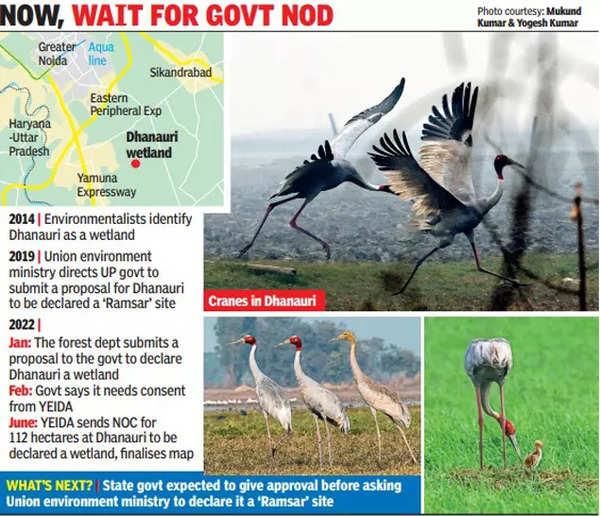 Why in News?
Why in News?
The National Green Tribunal (NGT) has instructed the Uttar Pradesh government to provide updates within four weeks regarding the status of designating the Dhanauri water body as a wetland.
- The Dhanauri Wetland is located in Greater Noida, within the Gautam Buddha Nagar district.
- It is situated near the Okhla Bird Sanctuary and Surajpur Wetland, approximately 15 kilometers from the River Yamuna.
- This wetland is primarily composed of marshes and serves as an essential habitat for the vulnerable Sarus Crane.
- Dhanauri Wetland is recognized as an Important Bird Area by BirdLife International.
Additional Details
- Sarus Crane: The Sarus Crane (Antigone antigone) is noted as the world's tallest flying bird, with three subspecies identified: the Indian Sarus Crane, the Eastern Sarus Crane, and the Australian Sarus Crane. The Indian Sarus Crane stands out as the heaviest and tallest among these subspecies.
- This bird is classified as Vulnerable on the IUCN Red List, highlighting its need for conservation efforts.
- Other bird species found in the Dhanauri Wetland include Common Teal, Mallard, Northern Pintail, Greylag Geese, Bar-headed Geese, Woolly-necked Stork, Black-necked Stork, Painted Stork, and Eurasian Marsh Harrier.
The designation of Dhanauri Wetland is crucial for its conservation and the protection of its unique biodiversity, particularly the Sarus Crane, which plays a significant role in the ecosystem.
GS3/Science and Technology
Guillain-Barre Syndrome (GBS)
Source: Indian Express
Why in News?
Recently, around 59 individuals in Pune have been diagnosed with Guillain-Barre Syndrome, a serious neurological disorder that warrants attention and understanding.
- GBS is a neurological disorder where the immune system attacks the peripheral nervous system.
- It can affect individuals of any age, but is most prevalent in those aged between 30 and 50.
- While the exact cause is unknown, it often follows infections, vaccinations, or surgeries.
Additional Details
- Peripheral Nervous System: This system encompasses all nerves outside the brain and spinal cord, playing a crucial role in muscle movement, pain signaling, and sensory perception including temperature and touch.
- Symptoms: Initial signs include fever, followed by muscle weakness that escalates over hours, days, or weeks. Some cases are mild, while others can lead to severe paralysis, impacting the ability to breathe independently.
- Treatment: Currently, there is no known cure for GBS. The primary treatment involves intravenous immunoglobulin (IVIG), derived from donated blood, which helps to mitigate the immune system's attack on nerves.
Understanding GBS is vital, especially with the recent rise in cases, to ensure appropriate responses and support for those affected.
GS2/International Relations
The Impact of Immigration Policy Uncertainty - Lessons from the H-1B Visa Debate
Source: Indian Express
Why in News?
Over the past decade, immigration policy discussions have become essential in advanced economies, especially in the United States. Initially focused on low-skilled workers, the debates have now shifted towards high-skilled professionals, particularly concerning the H-1B visa program.
- The H-1B visa is a temporary, non-immigrant visa that allows U.S. employers to hire foreign workers in specialized fields.
- Immigration policy uncertainty, especially during the Trump administration, significantly impacted global labor markets, particularly affecting India.
- Firms adapted their hiring strategies in anticipation of stricter immigration policies, leading to increased job postings in India.
- Policymakers must understand the broader economic implications of immigration policies, including the potential for unintended consequences.
Additional Details
- H-1B Visa Program: This program facilitates the hiring of foreign specialists in fields like technology and finance, with a yearly cap of 65,000 visas and a lottery system for selection.
- India's "Brain Gain": The high demand for IT professionals in the U.S. has led to skill development for Indian students, with many returning home to bolster India's IT sector.
- Economic Policy Uncertainty: Following Trump's primary victory in 2016, migration-related uncertainty surged, impacting job postings in the U.S. and India differently.
- Firms increasingly shifted hiring to India as a strategy to manage risks associated with U.S. immigration policy uncertainties.
The H-1B visa debate highlights the extensive implications of immigration policy uncertainty. While intended to protect domestic jobs, such policies can inadvertently stimulate job creation in countries like India. It is crucial for policymakers to recognize the economic ripple effects of immigration discussions and prioritize stability to avoid unintended consequences.
GS3/Defence & Security
What is Typhon Missile System?
Source: The Hindu
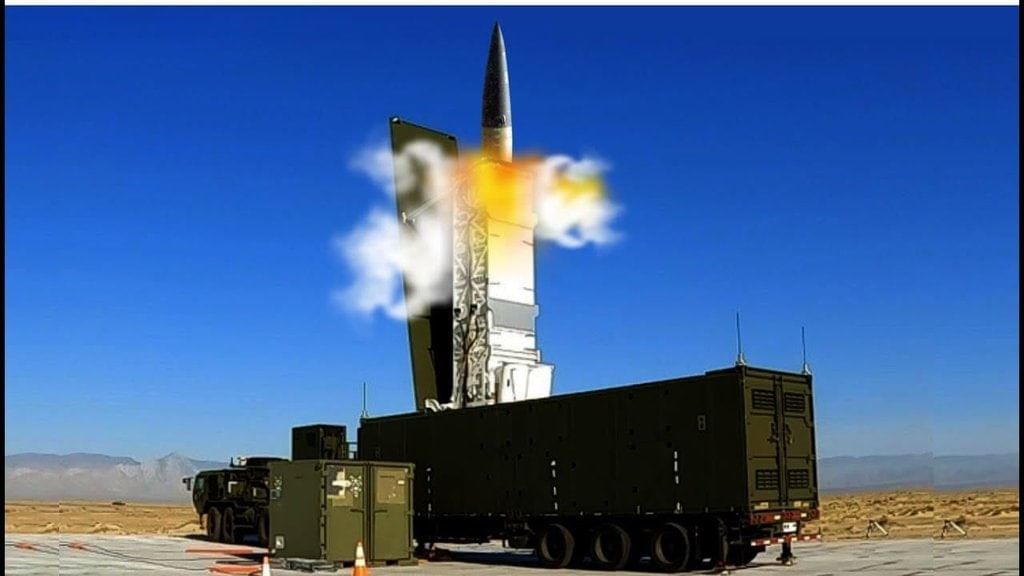 Why in News?
Why in News?
The U.S. military has recently relocated its Typhon missile launchers within the Philippines to improve their mobility and survivability in response to increasing tensions with China and Russia.
- The Typhon missile system, also known as Mid-Range Capability (MRC), is designed for surface-to-surface operations.
- It enhances the U.S. Army's long-range strike capabilities through its mobile, ground-launched design.
- Manufactured by Lockheed Martin, the system has a modular design enabling it to fire various missile types.
Additional Details
- Missile Types:The Typhon system is primarily equipped with two advanced missile types:
- Standard Missile 6 (SM-6): A surface-to-air missile with a range of 500 km that can also engage surface targets.
- Tomahawk Cruise Missile: A cruise missile with a range of 2,500 km, traditionally used for land attacks but now increasingly capable of anti-ship missions.
- A complete Typhon Weapon System battery includes four launchers, a command post, and various support vehicles.
The deployment of the Typhon missile system represents a strategic enhancement of U.S. military capabilities in the region, aiming to counter potential threats and ensure improved operational readiness.
GS2/Governance
Subhash Chandra Bose Aapda Prabandhan Puraskar
Source: The Print
Why in News?
The Indian National Centre for Ocean Information Services (INCOIS) has been awarded the Subhash Chandra Bose Aapda Prabandhan Puraskar-2025 in the Institutional Category for its outstanding contributions to disaster management.
- INCOIS recognized for excellence in disaster management.
- Award instituted by the Government of India to honor contributions in disaster management.
- Annual announcement coincides with the birth anniversary of Netaji Subhash Chandra Bose on January 23.
Additional Details
- Eligibility: Only Indian nationals and institutions are eligible for the award. This includes various entities such as voluntary organizations, corporate bodies, academic institutions, and uniformed forces.
- Criteria for Candidates: Candidates must have made significant contributions to disaster management, which encompasses prevention, mitigation, preparedness, response, relief, rehabilitation, and research/innovations.
- Award Prizes: The winning institution will receive a certificate and a cash prize of Rs. 51 lakhs, which is to be utilized for disaster management activities. Individuals will receive a certificate and a cash prize of Rs. 5 lakhs.
This award serves to recognize the vital role played by individuals and organizations in enhancing disaster management practices across India, fostering a culture of resilience and preparedness.
GS3/Defence & Security
Eurodrone Programme
Source: The Print
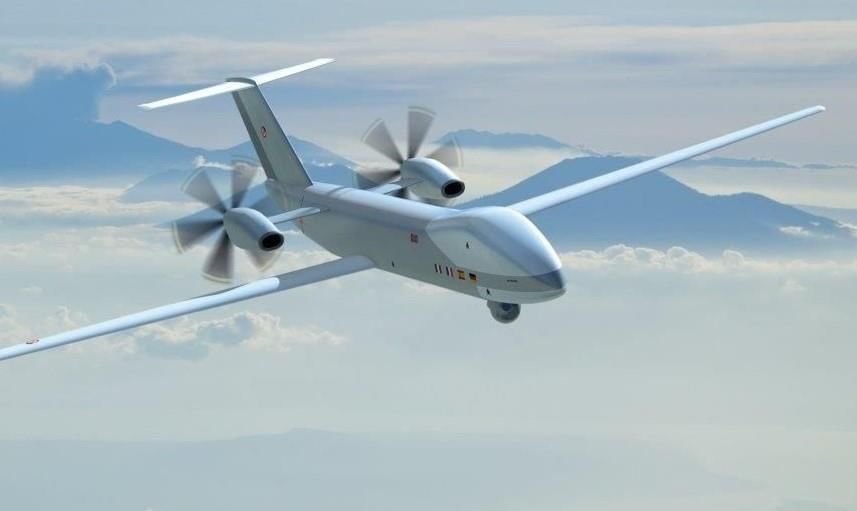 Why in News?
Why in News?India has recently joined the Eurodrone programme as an observer state, highlighting its growing collaboration in defense technology and strategic partnerships.
- Eurodrone is a twin-turboprop Medium Altitude Long Endurance Remotely Piloted Aircraft System (MALE RPAS).
- It has a maximum mission payload capacity of 2.3 tonnes and an endurance of up to 40 hours.
Additional Details
- Features: The Eurodrone is designed with superior capabilities compared to existing remotely piloted systems, featuring a twin-engine configuration that allows for operations in various environments, including severe weather conditions.
- Uses: This RPAS is intended for long-endurance missions, including intelligence, surveillance, target acquisition, reconnaissance (ISTAR), maritime surveillance, anti-submarine warfare, and airborne early warning.
- The Eurodrone is the first RPAS specifically designed for seamless integration into civil airspace.
- Programme Overview: The Eurodrone initiative is part of Europe’s collective defense strategy aimed at reducing reliance on platforms from the US and Israel, such as the Reaper and Heron drones.
- It is a collaborative development effort involving four nations: Germany, France, Italy, and Spain, led by the Organisation for Joint Armament Cooperation (OCCAR).
- Germany serves as the Lead Nation for the programme, with Airbus Defence and Space (Germany) acting as the Industrial Prime alongside major subcontractors including Leonardo (Italy), Dassault Aviation (France), and Airbus Defence and Space (Spain).
The Eurodrone programme represents a significant step towards enhancing European defense capabilities and fostering international cooperation in military technology.
GS3/Defence & Security
Indian Navy Completes Hydrographic Survey of Mauritius
Source: The Hindu
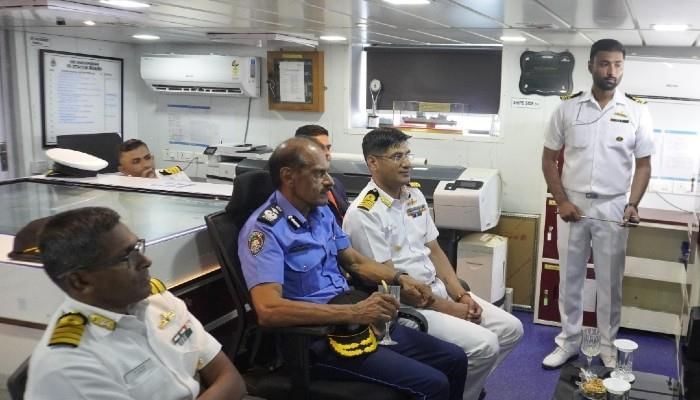 Why in News?
Why in News?The Indian Navy's INS Sarvekshak has successfully finalized the hydrographic survey of Mauritius, covering an extensive area of over 25,000 square nautical miles. This achievement is significant for maritime navigation and environmental management in the region.
- The hydrographic survey enhances navigational safety and supports maritime activities in the Indian Ocean.
- It reflects India's commitment to strengthening ties with Mauritius and ensuring regional security.
Additional Details
- Mauritius: An island country located in the Indian Ocean, east of Madagascar, covering a total area of 2,040 square kilometers.
- Capital: The capital city is Port Louis.
- Geography: Mauritius is primarily a volcanic island formed approximately 8 million years ago, with its highest peak being Mount Piton at 828 meters.
- Climate: The country experiences a maritime subtropical climate with fairly uniform temperatures year-round.
- Population: The population predominantly consists of individuals of Indo-Pakistani descent, with significant groups of Creole and Franco-Mauritian heritage.
- Independence: Mauritius gained independence from the United Kingdom in 1968 and operates as a stable parliamentary republic.
- Languages: While English is the national language, the majority of the population speaks Creole or French.
This survey not only supports Mauritius's infrastructure but also underscores the collaborative efforts between India and Mauritius in enhancing maritime security and environmental protection in the Indian Ocean region.
GS2/Polity
A Grey Birthday for the Election Commission of India
Source: The Hindu
Why in News?
The Election Commission of India (ECI) is celebrating its 75th anniversary on January 25, coinciding with National Voters Day. However, this milestone raises significant concerns regarding the integrity of electoral processes, which echo the warnings of B.R. Ambedkar about maintaining electoral independence and safeguarding electoral rolls from manipulation.
- The foundation of the ECI is rooted in ensuring free and fair elections, as emphasized by B.R. Ambedkar.
- Recent discrepancies in the Maharashtra State elections raise questions about the accuracy of voter enrolment.
- The ECI's lack of transparency regarding voter registration processes has fueled public distrust.
Additional Details
- Ambedkar's Vision: Ambedkar warned against the manipulation of electoral rolls, emphasizing that voter inclusion should not be influenced by biases based on race, culture, or language.
- Case Study - Maharashtra Elections: There were 9.7 crore voters enrolled, exceeding the state's adult population estimate of 9.54 crore, indicating a potential anomaly.
- The rate of voter registration surged dramatically in the months leading up to the elections, raising concerns about the authenticity of these newly registered voters.
- ECI's Role: The silence from the ECI regarding these anomalies has deepened public suspicion and criticism of its effectiveness in ensuring electoral integrity.
- Necessary Reforms: To address these pressing issues, integrating Aadhaar with electoral rolls could help eliminate fraudulent registrations and enhance verification processes, while ensuring that no eligible voter is disenfranchised.
In conclusion, the challenges faced during the Maharashtra elections highlight critical vulnerabilities in India's electoral system. By addressing transparency and accountability, and adopting technological solutions like Aadhaar integration, the ECI can work towards restoring public confidence in the electoral process.
GS2/International Relations
Making Sense of Trump’s Tariff Threat
Source: Indian Express
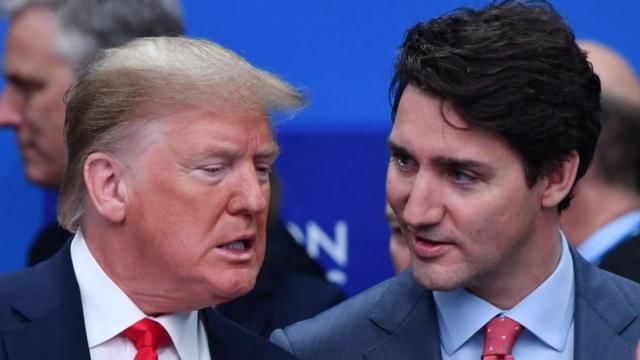 Why in News?
Why in News?Policymakers and analysts globally are closely monitoring US President Donald Trump's potential tariff announcements. Trump has proposed imposing a 10% tariff on imports from China, a 25% tariff on goods from Mexico, Canada, and the European Union, and has threatened a 100% tariff on BRICS nations, including India. Although specific tariffs have yet to be announced, Trump has directed his team to evaluate China's response to the tariffs from his first term before making any new decisions.
- Trump's tariffs could significantly impact international trade dynamics.
- Countries have various strategies to counter imposed tariffs.
- India's exposure to Trump's tariffs is expected to be limited.
Additional Details
- Tariffs: A tariff is a tax levied by a government on imported goods. For example, domestically produced US cars may cost $120, while imported Chinese cars could cost $100. This price difference can lead to increased imports of cheaper cars.
- Implications of Tariffs:The imposition of tariffs can lead to several outcomes:
- Impact on Domestic Manufacturers: US carmakers may experience a drop in sales, resulting in job losses and limited new job creation.
- Trade Deficit Expansion: Increased imports can lead to a larger trade deficit as more money flows out of the US.
- Consumer Benefit: Consumers could benefit from access to cheaper imported cars.
- Reasons for Imposing Tariffs:Tariffs can be used to:
- Protect Domestic Industries: A 50% tariff on Chinese car imports could raise their price to $150, making domestic cars more competitive.
- Increase Government Revenue: Tariffs generate income for the government by taxing popular imports.
- Encourage Foreign Direct Investment (FDI): Tariffs could incentivize foreign manufacturers to build factories in the US, creating jobs.
- Retaliation Strategies:Countries subject to tariffs, like China, may respond in various ways:
- Dumping by absorbing tariff costs.
- Passing costs to consumers, raising prices significantly.
- Setting up local factories in the US.
- Trade rerouting through countries with favorable trade agreements.
- Engaging in a trade war by imposing tariffs on US exports.
- Trump's Approach: Trump appears to be using a "wait and watch" strategy, utilizing tariffs as a negotiation tool rather than an immediate threat. His unpredictability makes economists cautious about dismissing his tariff threats.
- Limited Risk for India: Experts suggest that India is not a primary focus of Trump's tariff policies, which are more directed at countries like China and Canada, where the US has significant trade deficits.
In conclusion, the current scale of trade between India and the US suggests that the impact of Trump's proposed tariffs on India is expected to be minimal, with the focus primarily on larger trading partners.
GS2/Polity
Indian Partnership Act, 1932
Source: Law Trend
Why in News?
The Supreme Court of India recently reinforced the obligatory nature of Section 69 of the Indian Partnership Act, 1932. This ruling clarifies that partners of unregistered firms cannot enforce their contractual rights against each other.
- The Indian Partnership Act, 1932 governs the formation, rights, and dissolution of partnerships in India.
- It is modeled after the English Partnership Act of 1890 and is applicable across the entire country.
- Partnerships created for charitable purposes are exempt from this Act.
Additional Details
- Definition of Partnership: A partnership is defined as a relationship between individuals who have agreed to share the profits of a business operated by any or all of them on behalf of everyone involved.
- Partnership Deed: This document is vital as it outlines the rights and responsibilities of each partner in the firm.
- The Act specifies the mutual rights and duties of partners, the registration of firms, and the procedure for resolving disputes among partners.
- It also includes provisions regarding the rights of minor partners and their associated liabilities.
This ruling emphasizes the importance of registering partnerships to enforce contractual agreements effectively.
|
52 videos|5374 docs|1136 tests
|
FAQs on UPSC Daily Current Affairs: 24th January 2025 - Current Affairs & Hindu Analysis: Daily, Weekly & Monthly
| 1. What is KaWaCHaM and its significance in environmental conservation? |  |
| 2. What are the key features of the Dhanauri Wetland? |  |
| 3. How does Guillain-Barre Syndrome (GBS) affect the nervous system? |  |
| 4. What are the implications of immigration policy uncertainty on the H-1B Visa program? |  |
| 5. What advancements does the Typhon Missile System represent in modern warfare? |  |
















